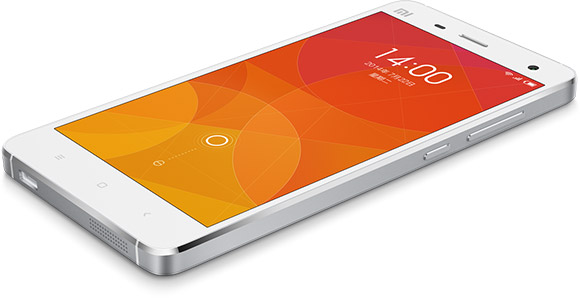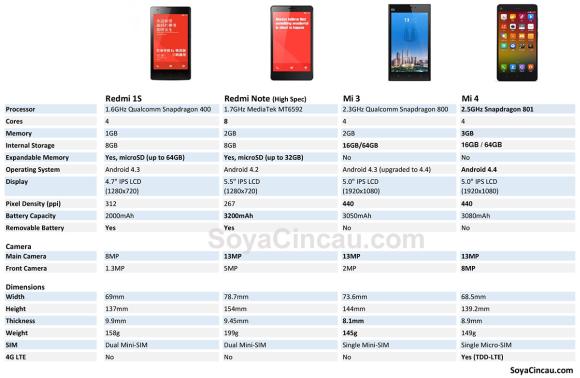The recently announced Xiaomi Mi 4 is Xiaomi’s latest pride of joy to take on the high-end smart phone segment. It gets new top notch components that are wrapped around in a premium metal chassis. So how much of a difference is it compared to its former Mi 3 smart phone?
For starters, it gets a more powerful 2.5GHz Quad-Core Snapdragon 801 processor mated with 3GB RAM, which gives it an edge over mainstream flagship smart phones such as the Galaxy S5, HTC One M8 and Sony Xperia Z2. Although it maintains the same 5″ Full HD display, you’ll noticed that Xiaomi manages to trim its dimensions tremendously when you compare both numbers side by side.
With its metal body construction, the Mi 4 ends up being thicker and heavier than the Mi 3 but not by a lot. However if you look at the height and width, the Mi 4 has an incredibly small footprint for a 5 inch smart phone. In this comparison, the Mi 4 is actually narrower than its budget Redmi 1S and is slightly taller by a couple of mm.
The Mi 4’s 3,080mAh battery is a slight bump by a mere 50mAh over its predecessor while its 13MP camera is a newer Sony IMX214 f/1.8 unit that boasts an ultra fast 0.3 seconds focus time. As comparison, the Mi 3’s 13MP camera uses an older Sony IMX135 unit with F/2.2 aperture. New on the Mi 4 is the ability to shoot 4K resolution videos and a real-time HDR feature. For those who love taking selfies, the Mi 4 packs a wide angle 8MP Sony BSI f/1.8 front camera as opposed to a standard 2MP shooter on the Mi 3.
Another feature which is not listed in the spec sheet above is the inclusion of an InfraRed Blaster at the top. Like the Galaxy S5 and HTC One M8, you can now use the Mi 4 as a universal remote for various entertainment and home appliances. In terms of connectivity, the Mi 4 finally supports 4G but it supports TDD-LTE that’s widely used in China. For international markets including Malaysia, a FDD-LTE version is said to be in the pipeline and it could be released towards end of the year. If you spot anyone selling a Mi 4 early in Malaysia, make sure the unit you’re getting supports our local WCDMA networks.
On the downside, the Mi 4 carries over the similar limitation as the Mi 3. It lacks a microSD expansion slot and the battery too is non-removable. During the launch, Xiaomi has announced 16GB and 64GB storage variants but it is likely that 16GB option would be widely sold internationally. As for the SIM Card, it now uses a micro-SIM slot instead of a full sized mini-SIM. So for those upgrading from a feature or older smart phone would need to get their sim cards converted if they are picking up the Mi 4. By the time the Mi 4 hits the market, it will be running on a newer MIUI Version 6 which is targeted for 16 August release.








